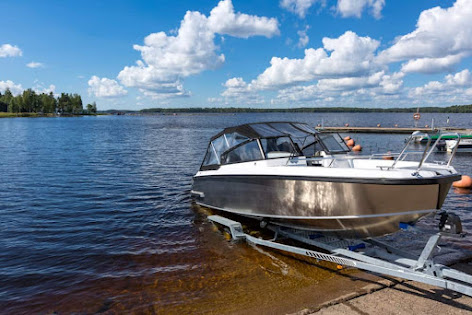Most Important Considerations when Choosing a Marine Autopilot
Choosing a marine autopilot can be a difficult task, as it involves balancing various factors such as performance, reliability, compatibility, cost and ease of use. A marine autopilot is a device that automatically controls the steering of a boat or ship, based on inputs from sensors, compasses, and a Global Positioning System (GPS).
It can help reduce the helmsman's workload and fatigue, improve fuel efficiency and safety, and enable more accurate navigation. However, not all marine autopilots are created equally, and some may fit your needs better than others. In this article, we will discuss some of the most important considerations when selecting a marine autopilot for your vessel.
Boat Type
The first thing to consider is the type and size of your vessel, as this will determine the power and sophistication of the marine autopilot you need. For example, a small sailboat may require a simple tiller or steering wheel, which is easy to set up and operate, but has limited functionality and accuracy.
A larger boat or yacht may need a more
sophisticated hydraulic or electric linear drive unit, which is more powerful
and precise, but also more expensive and complex to install and maintain. You
should also take into account your vessel's speed, maneuverability and
stability, as these factors affect the responsiveness and sensitivity of the
marine autopilot.
Navigation Type
The next thing to consider is the type and frequency of navigation you do, as this will affect the marine autopilot features and capabilities you need. For example, if you mainly do coastal cruising or fishing, you may want a basic marine autopilot that can follow a compass heading or waypoint, and has a simple user interface and display.
If you're
sailing offshore or traveling long distances, you may need a more advanced
marine autopilot that can integrate with other instruments and systems, such as
wind sensors, radar, AIS, and chart plotters, and has a more advanced user
interface and display. You should also take into consideration the weather and
sea conditions you encounter, as these factors affect the reliability and
durability of the marine autopilot.
Installation Type
The third thing to consider is the type of marine autopilot and the ease of installation, as this will impact the time and cost of setting up and configuring the device. For example, some marine autopilots are designed to be plug-and-play, which means they can be easily connected to an existing steering system and power source, and require minimal calibration and modification.
Others may require more wiring, mounting and adjustment, and may require
professional installation and service. You should also consider the footprint
and layout of your vessel, as these factors affect the placement and
accessibility of marine autopilot components.
Budget Type
The fourth thing to consider is the type and amount of budget you have for a marine autopilot, as this will limit the options and quality of device you can afford. For example, a low-budget marine autopilot may have fewer features and functions, lower performance and accuracy, and lower reliability and durability.
A higher budget marine autopilot may have
more features and functionality, higher performance and accuracy, and greater
reliability and durability. You should also consider the ongoing costs of
maintaining, repairing and upgrading your marine autopilot, as these factors
affect the total cost of ownership and operation of the device.
Preference Type
The fifth thing you need to consider is the type and level of preference you have for marine autopilot, as this will reflect your personal taste and boating style. For example, some boaters may prefer a simple, intuitive marine autopilot that doesn't require much attention or intervention, and that blends in with the rest of the cockpit.
Others may prefer a sophisticated, customizable marine autopilot that allows them to fine-tune and monitor every aspect of steering, and features a dazzling design and display. You should also take into account the reviews and comments of other boat owners who have used the marine autopilot you are interested in, as these factors may reveal the strengths and weaknesses of the device.
Related Articles to Boating/Fishing :




Comments
Post a Comment